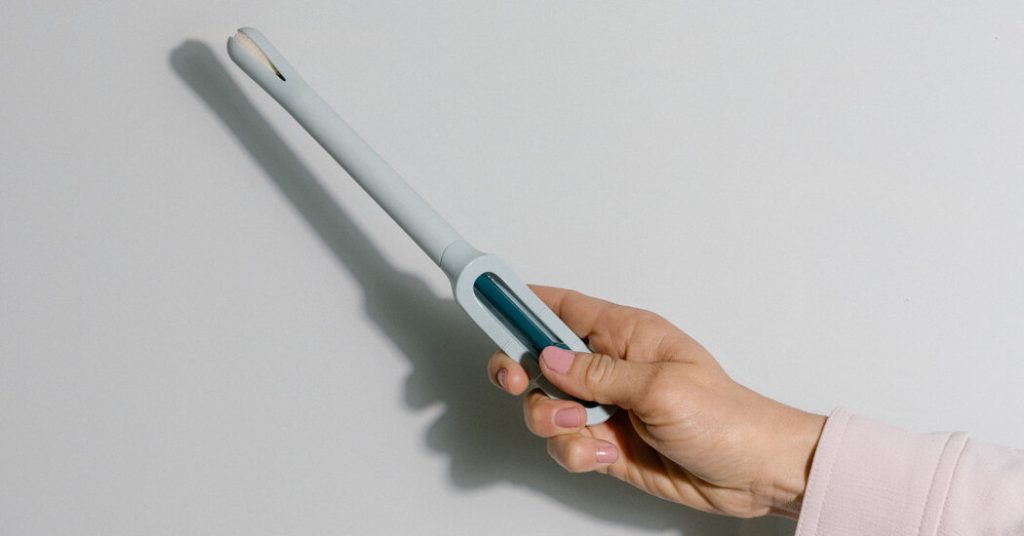The Food and Drug Administration approved the United States’ first at-home cervical cancer screening tool on Friday, a decision that stands to give women an accessible alternative to Pap smears, which many find painful or traumatic.
The new test, made by Teal Health, involves swabbing the vagina with a spongelike tool rather than inserting a speculum and scraping cells from the cervix, as doctors do in Pap smears.
Similar vaginal tests were approved last year for use in medical offices. But the at-home version could help women who have trouble finding, traveling to or making time for an in-person appointment.
The approval is a result of a process that began with the discovery decades ago that the human papillomavirus, commonly known as HPV, causes almost all cervical cancer cases, and that people who don’t have the virus are at virtually no risk.
Armed with that information, many doctors started testing Pap smear samples for HPV in addition to analyzing cervical cells under a microscope. Some medical authorities shifted to recommend HPV testing as the primary screening method, which opened the door for vaginal tests, because the virus can be detected in vaginal as well as cervical cells.
Cervical cancer experts told The New York Times that the evidence for at-home testing was strong, and studies show it to be about as accurate as Pap smears.
Teal Health will allow patients to order the test online, speak with a telehealth doctor, collect a sample and then mail it to be tested for HPV. Kara Egan, Teal’s chief executive and co-founder, said the company was working with insurers to secure coverage and with donors to try to subsidize the cost for people without insurance.
If the test is positive, the patient will be referred to an in-person provider for a Pap smear or colposcopy to check for cancer or precancerous cell changes. (A colposcopy examines the cervix through a magnifying device and allows doctors to take biopsies.) If the test is negative, no further screening will be needed for three to five years.
Teal plans to mail an initial round of tests to customers in California next month before expanding to other states.
Since its introduction more than 80 years ago, the Pap smear is estimated to have prevented hundreds of thousands of cervical cancer deaths. And in 2006, a vaccine against HPV became available in the United States.
Vaccination and screening make cervical cancer preventable. And yet, it still kills thousands of Americans each year, because many women do not or cannot get vaccinated or screened.
“The thing that is so sad to me is that cervical cancer is a disease that we could eradicate in our lifetime,” said Dr. Alexi Wright, the director of gynecologic oncology outcomes research at the Dana-Farber Cancer Institute. “We have the tools to do it. We just don’t have comprehensive HPV vaccination or cervical cancer screening, and often can’t reach the people who are at highest risk.”
Some people of color and rural residents may be disproportionately likely to fall behind on screening, but no group consistently receives it. During Teal’s clinical trial, it asked participants when they had last received a screening, and at least one in four women in every group it examined — across race, income, education, location and insurance status — was past due.
“This really is a problem that’s felt by everybody,” Ms. Egan said.
Many women see a gynecologist only when they become pregnant, and never for preventive care. A home test could be the thing that alerts those at risk of cervical cancer that they need to get to a doctor, said Dr. Sarah Kim, a gynecologic surgeon at Memorial Sloan Kettering Cancer Center.
But Dr. Kim said she didn’t want patients to see at-home HPV testing as a wholesale replacement for gynecological exams.
“The place that I see it most applicable is for people that currently don’t see their doctor,” she said.
In December, draft recommendations from the U.S. Preventive Services Task Force endorsed self-collected vaginal tests as an option for HPV testing, and said HPV testing should be the primary screening method for cervical cancer for patients 30 and older. The task force continued to recommend Pap smears for patients under 30, but added that self-collected tests offered another option for people who face barriers getting to the doctor or find Pap smears uncomfortable.
The American Cancer Society’s recommendations are a little different, urging HPV testing as the primary option starting at 25.
Dr. Kathy MacLaughlin, an associate professor of family medicine at the Mayo Clinic who studies cervical cancer screening, said more work was needed to ensure patients with a positive home test could find and afford an in-person provider for a follow-up, given that lack of access is a reason they are likely to use the home test to begin with.
“Step 1 is getting more people screened,” she said, but solving the problem of in-person access is “the important Step 2 and 3 and 4.”


